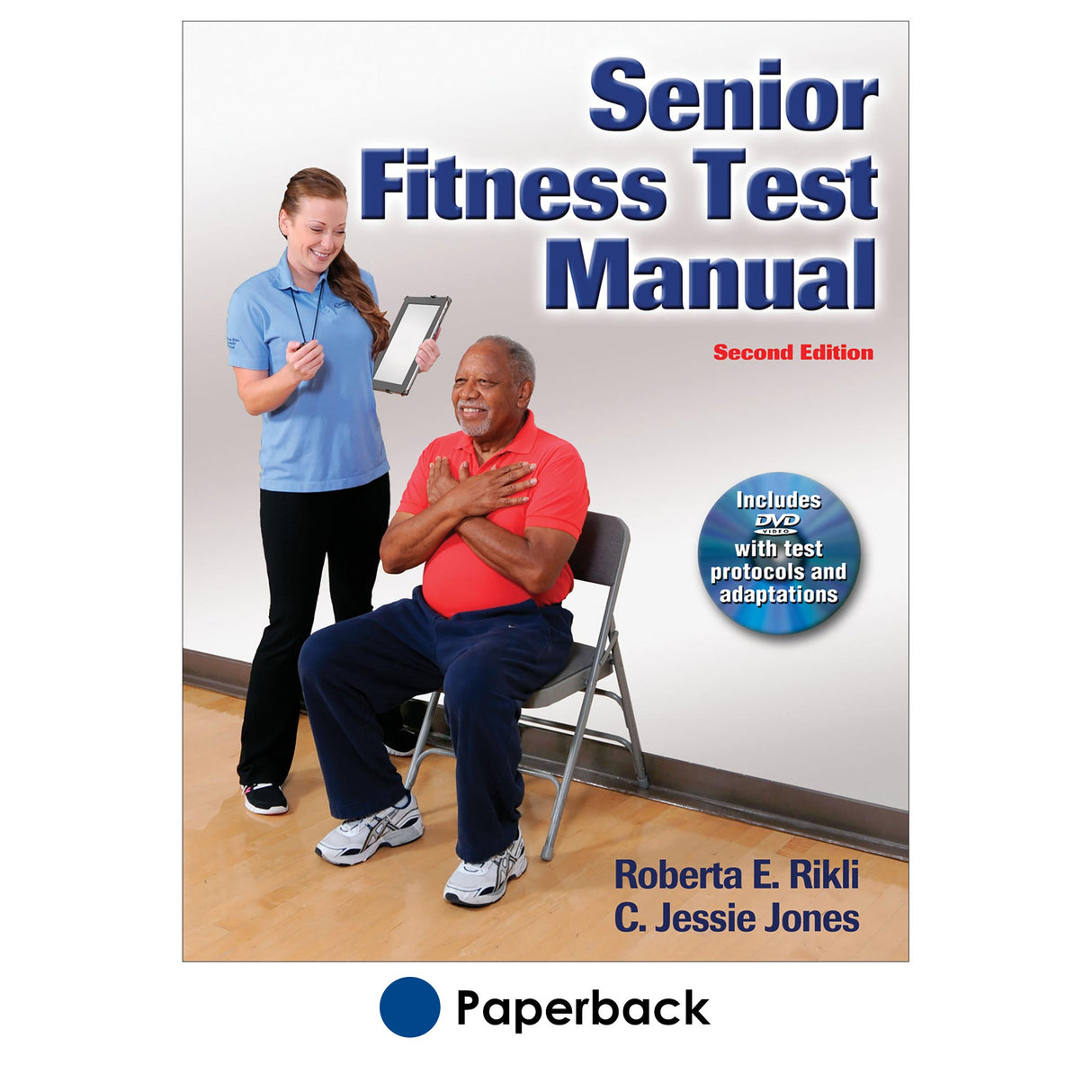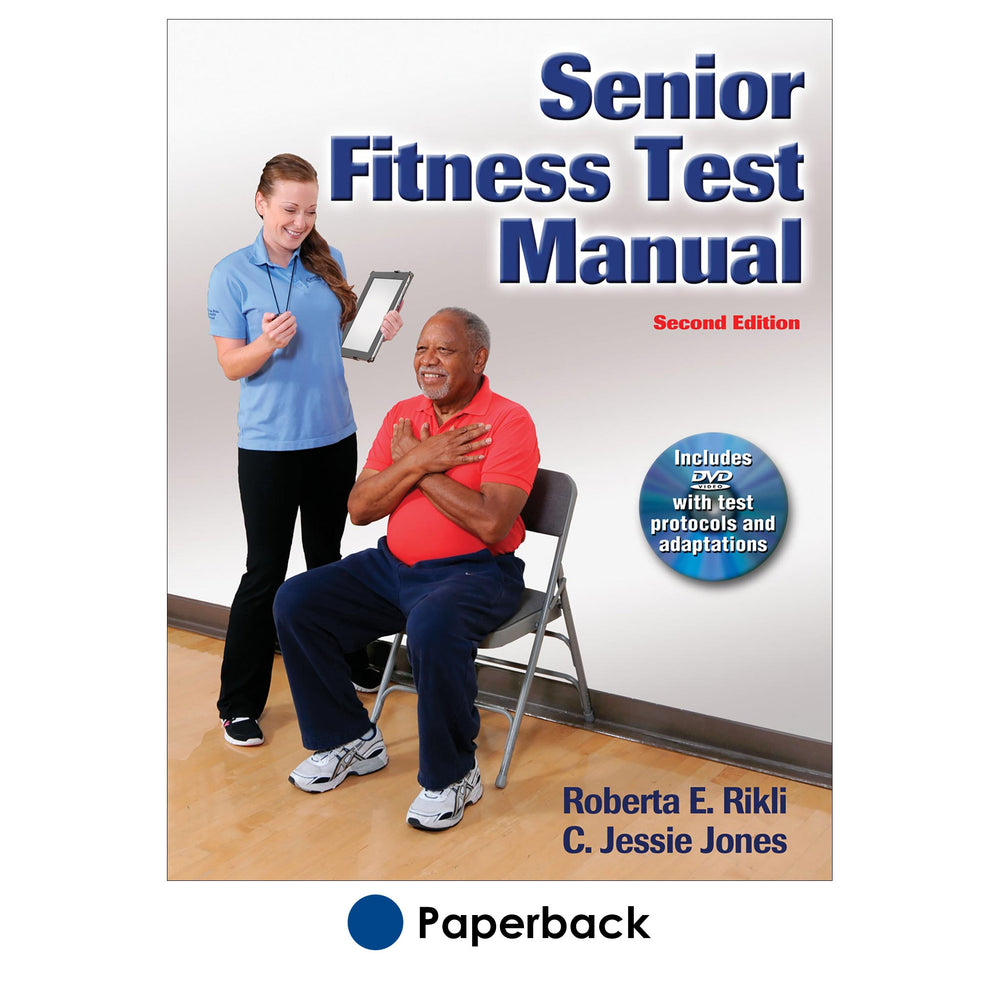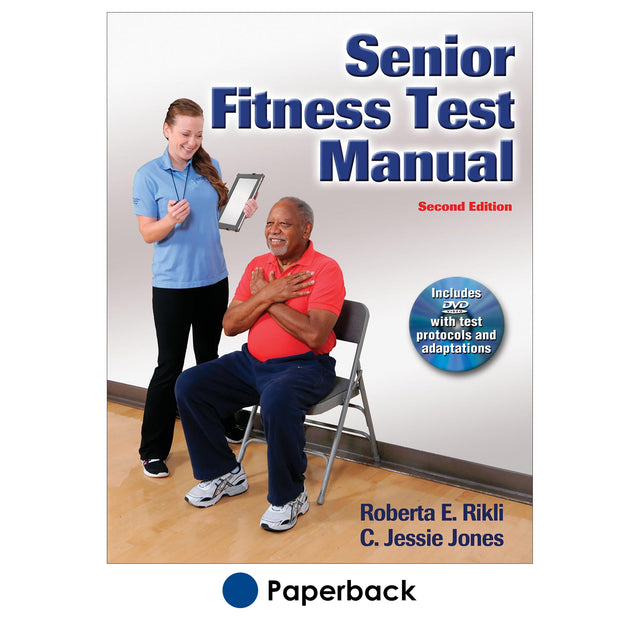Senior Fitness Test Manual-2nd Edition
Author: Roberta Rikli, C. Jessie Jones
$76.00 USD
Senior Fitness Test Manual, Second Edition, offers the most comprehensive and reliable test battery for assessing physical fitness in adults ages 60 and older. The tests in this resource assist health practitioners and fitness and rehabilitation specialists in identifying weaknesses that cause mobility problems, developing exercise programs that improve functional fitness, preventing future mobility issues, and evaluating progress.
The Senior Fitness Test (SFT) is a simple, economical method of assessing the physical attributes that older adults need in order to perform daily activities. It consists of seven tests—covering lower- and upper-body strength, aerobic endurance, lower- and upper-body flexibility, agility, and balance—that can be conducted with minimal space, equipment, and technical requirements, making it easy to administer in most clinical and community settings or in the home environment. The manual presents clear instructions on preparing and administering the tests and interpreting and using the test results. Readers will find guidelines on creating senior fitness programs as well as exercises to recommend for improving functional fitness scores.
The second edition of the Senior Fitness Test Manual offers new tools to help facilitate the Senior Fitness Test. It includes expanded information on ways to modify test protocols for older adults with limiting conditions such as osteoporosis, obesity, Alzheimer’s disease, diabetes, stroke, fibromyalgia, heart conditions, multiple sclerosis, hip and knee replacements, chronic renal failure, chronic obstructive pulmonary disease, osteoarthritis, and blindness or low vision. Ready-to-use materials such as reproducible forms, large-print instructions (complete with photos) to post at testing stations, and large versions of performance charts make the testing process more effective, and an expanded chapter on improving test scores includes illustrated instructions for exercises that can be prescribed to seniors to help them improve their fitness.
In addition, the manual retains national normative data based on age and sex for over 7,000 adults ages 60 to 94, but it now includes criterion-referenced, clinically relevant fitness standards. Based on the authors' continued groundbreaking research on aging and functional fitness, these new criterion-referenced standards allow practitioners and older adults to identify the test scores at a specific age that are correlated with maintaining adequate functional mobility into the 90s, providing a new and deeper understanding of the test scores. This allows practitioners and their clients to focus on maintaining or improving functional fitness with customized goals meant to preserve and improve individual abilities.
The second edition of the Senior Fitness Test Manual is now packaged with a DVD that contains visual demonstrations of the tests, including setup, execution, evaluation, and modification of testing protocols to accommodate clients’ limitations. Throughout the text, DVD icons indicate when to view the DVD for live demonstrations.
Maintaining strength, endurance, flexibility, agility, and balance is critical to seniors whether their later-life interests are playing golf, running marathons, or performing daily tasks such as climbing stairs or getting out of a chair without assistance. The Senior Fitness Test Manual, Second Edition, offers a user--friendly means of evaluating physical capacity in the growing population of older adults and helping them to maintain and improve their functional fitness.
Audience
Resource for physical activity instructors working with older adults in fitness settings, including senior wellness centers, assisted living facilities, and retirement residences; also a text for university courses in fitness programming and exercise prescription for older adults.






